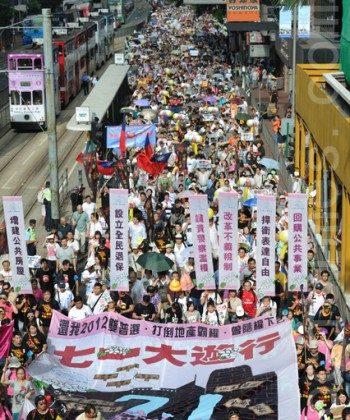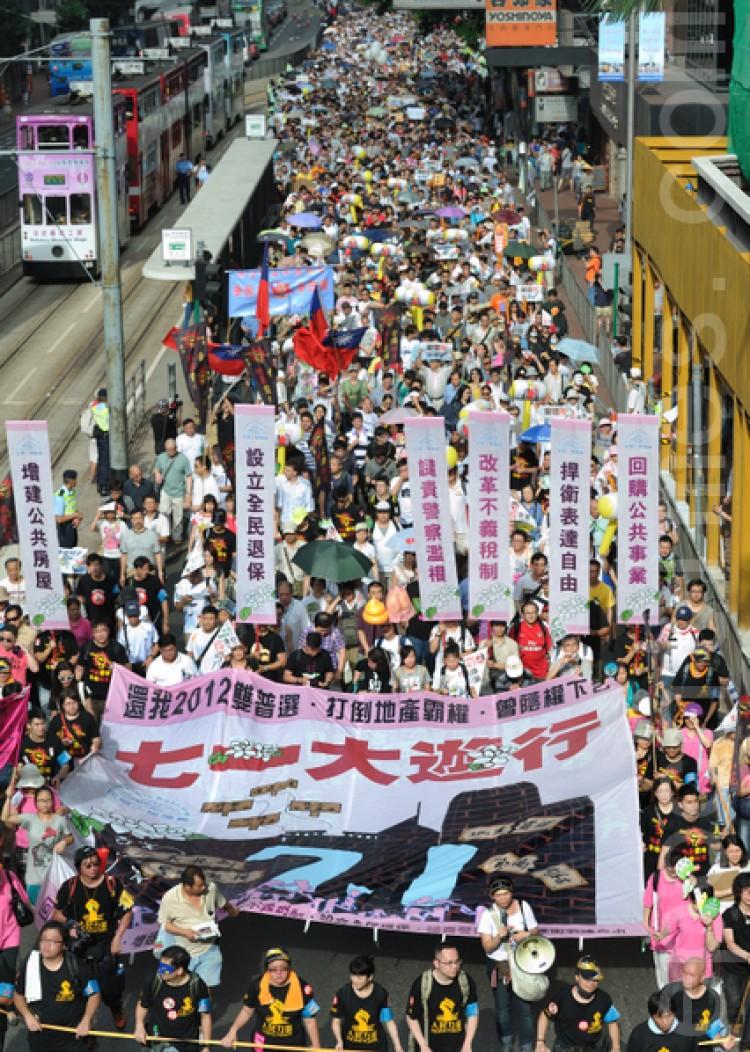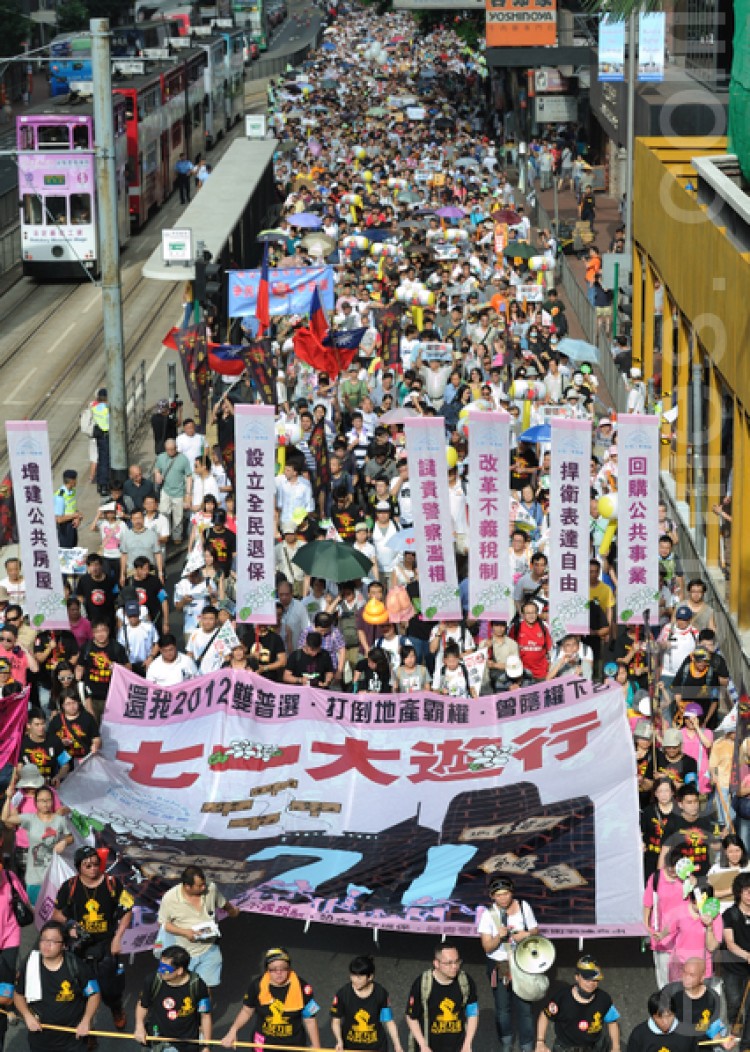Hong Kong’s annual July 1 march featured some very public acts of civil disobedience in response to authorities’ attempts to restrict an event famous for championing Hong Kong’s freedom. At a rally after the march outside the Hong Kong Special Administrative Region Office, speakers expressed discontent over voting rights, the taking of private property, and the abuse of police power.
Since the handover of Hong Kong to the Chinese communist regime on July 1, 1997, a rally and march has been held in Hong Kong. July 1 is a doubly significant date—it is also the anniversary of the founding of the Chinese Communist Party (CCP). The event has served as a protest against the CCP’s rule of Hong Kong and a rallying point for Hong Kongers who wish to preserve the city’s legacy of Western freedoms.
This year, police sought to restrict the freedoms that make the event possible. Included in new regulations for the march were a ban on the march goers gathering together at the end of the march—making the rally at the march’s end impossible to hold—and a ban on music.
Since 2003 the July 1 event has been organized by the Civil Human Rights Front (CHRF), which comprises 40 NGOs. An appeal by CHRF to the Appeal Board on Public Meetings and Processions led to a lifting of the new restrictions, except for the ban on music.
March goers would not accept the music ban, however, and several groups that walked in the march on Friday braved possible arrest by playing music. Some of the marchers, calling themselves “Artistic Citizens,” wore mock police uniforms and played homemade instruments. The police did not intervene. One Hong Konger who was present says she thinks the police did nothing because “there were just too many people.”
The day before the police announced the restrictions, CHRF said they expected 50,000 to take part. Gary Fan, one of the march organizers, had responded to the new restrictions by saying, “We believe more Hong Kong people will be angry about [the restrictions]. More Hong Kong people will choose to stand up on July 1 to safeguard their rights.”
Fan proved prophetic about the attendance. Organizers say more than 100,000 attended the march.
Leading the parade as it left Victoria Park at around 3 p.m. were residents of the Hong Kong village Shek Kong. They were forced to relocate due to construction of the Guangzhou-Shenzhen-Hong Kong Express Rail Link and were protesting against forced real estate acquisition. “Real estate hegemony” has become an important issue in Hong Kong, where, as on the mainland, local governments are believed to favor developers at the expense of citizens with no economic clout.
Other organizations protested against the curriculum in Hong Kong’s school system, which they consider “brainwashing.”
The marchers’ most serious demand was that Chief Executive Donald Tsang should resign. He is seen as ruling for the rich and has become the lightning rod for anger at soaring housing costs. Tsang’s term expires June 30, 2012 and his approval rating is now at its lowest level since 2005.
Further erosion of Hong Kong’s limited democracy is feared by Mrs. Anson Chan, a former Chief Secretary and annual participant in the march. At the rally, she berated the HKSAR authorities for pushing through without public consent a vacancy-filling mechanism for the Hong Kong Legislative Council, a measure she regards as depriving the public of its right to vote.
Martin Lee, former chairman of the Democratic Party, characterized this issue as one that insults the public intelligence, since vacancies would be filled without an election. He complained that the HKSAR authorities are following the direct orders of Beijing’s Liaison Office.
CHRF spokesman Lee Cheuk-yan stated that if the government refuses to listen to the people, then the people will have even more reason to be angry.
In the history of the July 1 march in Hong Kong, the 2003 march stands out. The Hong Kong authorities on orders from Beijing had put forward “Article 23,” an anti-subversion law that could be used to deny basic freedoms on the grounds of treason. The march that year featured a huge turnout—estimates of the attendance ranged from 350,000 to 1 million. With the Hong Kong public strongly opposed, Article 23 was defeated.
One participant said that the last time he took part was in 2003. According to him, the public’s discontent is now greater. He is worried that should the vacancy-filling mechanism be passed, then Article 23 will be reintroduced. He took part because of the grave dangers he sees on the near horizon for Hong Kong’s freedoms.
Read the original Chinese article.
[email protected]
Hong Kong Marchers Challenge Ban on Music, Voice Discontent
Hong Kong’s July 1 parade featured some public acts of civil disobedience, including several groups marching in the parade on Friday braving possible arrest by engaging in a banned activity: playing music.

By Gary Pansey
7/1/2011
Updated: 10/1/2015


